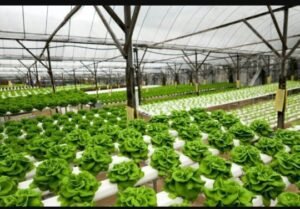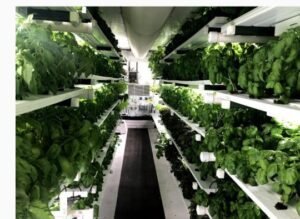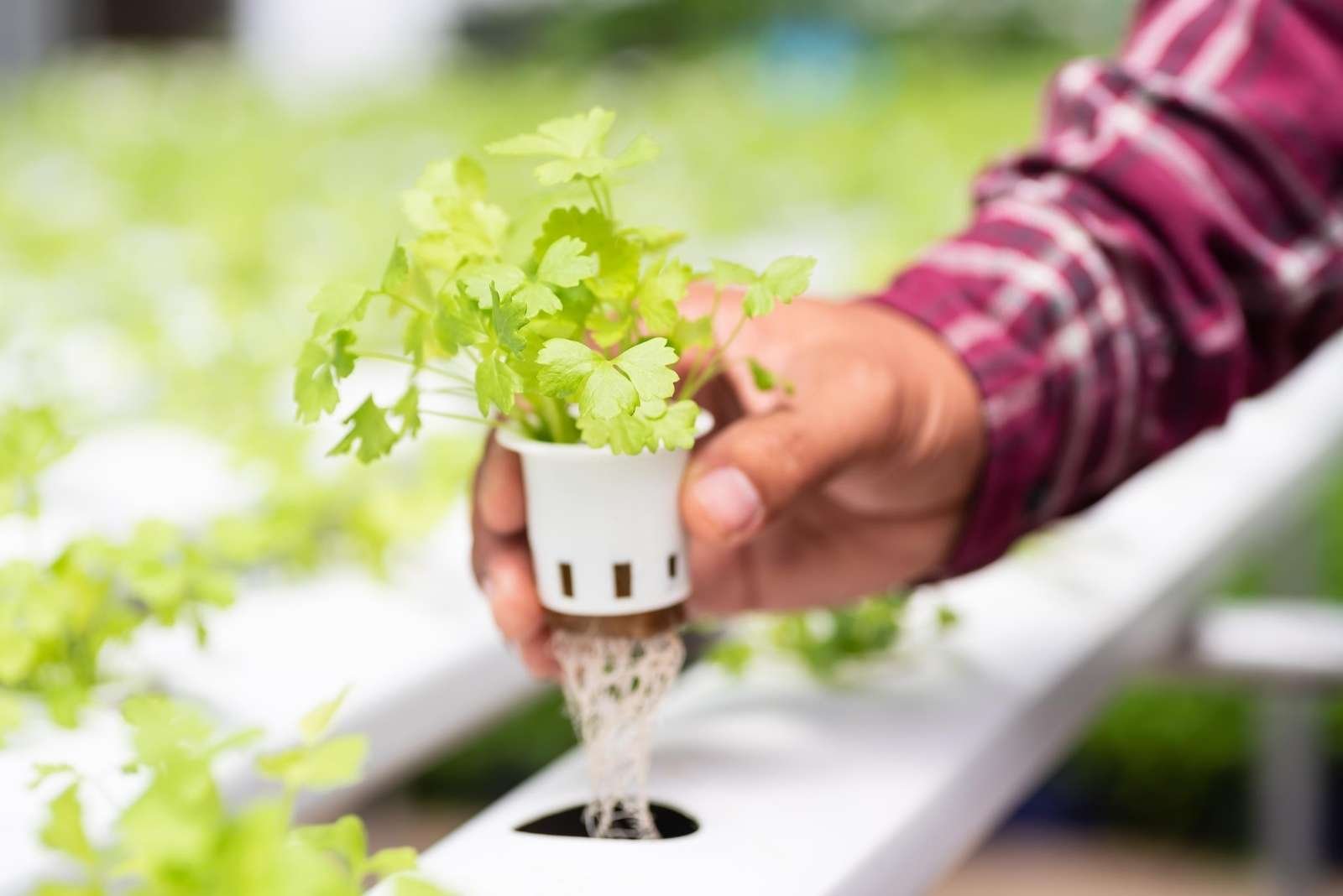జనరల్ మనం వ్యవసాయం అంటే భూమిలో మొక్కలను పాతి చేస్తుంటాం. కానీ హైడ్రోపోనిక్ వ్యవసాయం అంటే నీటిని ఉపయోగించి మట్టి లేకుండా వ్యవసాయం చేయడం. మట్టి ద్వారా అందే పోషకాలను నీటిలో కలిపి మొక్కలకు అందిస్తారు.
తక్కువ స్థలంలో ఎక్కువ పంటను పండించడానికి హైద్రోఫోనిక్ లో అవకాశం ఉంటుంది. పాలిహౌజ్ ల కన్నా అధునాతన పద్దతిలో ఈ విధానంలో కొన్ని రకాల పూలు, పండ్లు, కూరగాయలను, ఆకుకూరాలను పండిస్తున్నారు. ఆహార ఉత్పత్తికి ప్రత్యామ్నాయ మార్గంగా హైడ్రో ఫోనిక్ ఉపయోగపడుతుంది.
చౌడు నేలలు, వ్యవసాయానికి అనుకూలంగా లేని ప్రదేశాల్లో ఈ విధానం అవలంబించవచ్చు. తక్కువ నీరు, పోషకాలను ఉపయోగించి అధిక దిగుబడి సాధించడానికి అవకాశం ఉంటుంది. మొక్క స్థిరంగా ఉండటానికి మట్టికి బదులు జడపదార్థం ఉపయోగిస్తారు. పంట రకాన్ని బట్టి రాక్ పూల్, పెర్లైట్, వెర్మికులైట్, ఇసుకలను జడ పదార్థంగా వాడతారు. గాలి , వెలుతురు పంట రకాన్ని బట్టి తగిన మోతాదులో కృత్రిమంగా అందిస్తారు.

హైడ్రో ఫోనిక్ వ్యవసాయంతో లాభాలు:
1.నీటి వినియోగం తక్కువ
2.తక్కువ కాల వ్యవధిలో ఎక్కువ పంట దిగుబడికి ఛాన్స్.
3.నీటి ఎద్దడి గల ఎడారి ప్రాంతాల్లో కూడా పంటలు పండించడానికి అవకాశం ఉంది.
4.ఆకుకూరలు, టమాటాల లాంటి మొక్కలైతే చాలా వేగంగా పెరుగుతాయి.
5.చీడపీడలు, కలుపు మొక్కలు పెరగడం లాంటి బాధలు ఏవీ ఇందులో ఉండవు.
6.నేలకోత, వరదలు లాంటి బాధలు కూడా ఉండవు
7.పట్టణాల్లో మిద్దె వ్యవసాయానికి అనుకూలం. అంటే డాబాల మీద కూరగాయలు, ఆకుకూరలు, పండ్ల మొక్కలు పండించుకోడానికి అవకాశం ఉంటుంది.

నష్టాలు:
- హైడ్రోపోనిక్ పరికరాలు చాలా ఖరీదైనవి.
- ఈ వ్యవసాయంలో నిరంతర పర్యవేక్షణ అవసరం.
- సాంకేతిక నిపుణుల సాయం తప్పనిసరిగా తీసుకోవాలి
- కొన్ని రకాల పంటలకు మాత్రమే ఈ హైడ్రో ఫోనిక్ వ్యవసాయం అనుకూలంగా ఉంటుంది.
- విద్యుత్ వినియోగం ఎక్కువగా ఉంటుంది.
- నీటిలో ఉండే సూక్ష్మజీవులు మొక్కల పైకి పాకే అవకాశం ఉంటుంది. జాగ్రత్తగా గమనించుకోవాలి
What is hydroponic farming? What are the pros and cons of this?
General We are farming where we bury plants in the ground. But hydroponic farming means farming without soil using water. Nutrients from the soil are mixed with water and given to the plants.
Hydroponic has the potential to grow more crops in less space. Some types of flowers, fruits, vegetables and greens are cultivated in this system in a more advanced method than polyhouses. Hydrophonic can be used as an alternative way of food production.
This method can be adopted in hot soils and places that are not suitable for agriculture. Higher yields can be achieved using less water and nutrients. Mulch is used instead of soil to keep the plant stable. Depending on the type of crop, rock pool, perlite, vermiculite and sand are used as inert material. Air and light are provided artificially in appropriate doses depending on the type of crop.
Advantages with Hydroponic Farming:
1. Less water consumption
2.Chance of high crop yield in short period of time.
3. It is possible to grow crops even in waterlogged desert areas.
4. Plants like greens and tomatoes grow very fast.
5. It does not contain any problems like pests and weeds.
6. There will be no sufferings like landslides and floods
7. Suitable for sugarcane farming in cities. That means there is an opportunity to grow vegetables, greens and fruit plants on the terraces.
Disadvantages:
Hydroponic equipment is very expensive.
Constant monitoring is necessary in this agriculture.
The help of technical experts must be taken
Hydroponic farming is only suitable for certain types of crops.
Power consumption is high.
Microorganisms in the water have the potential to grow on plants. Be careful.


